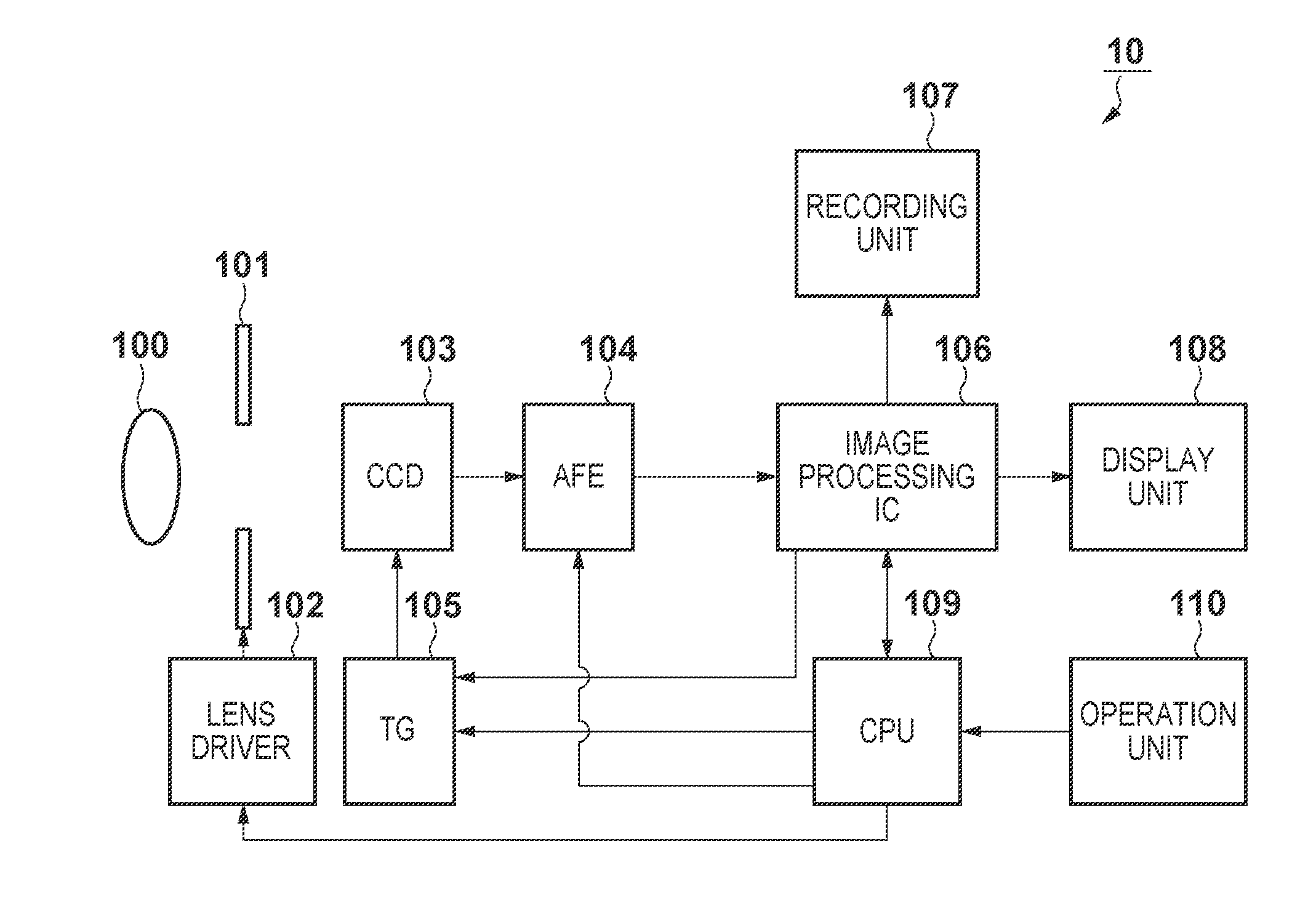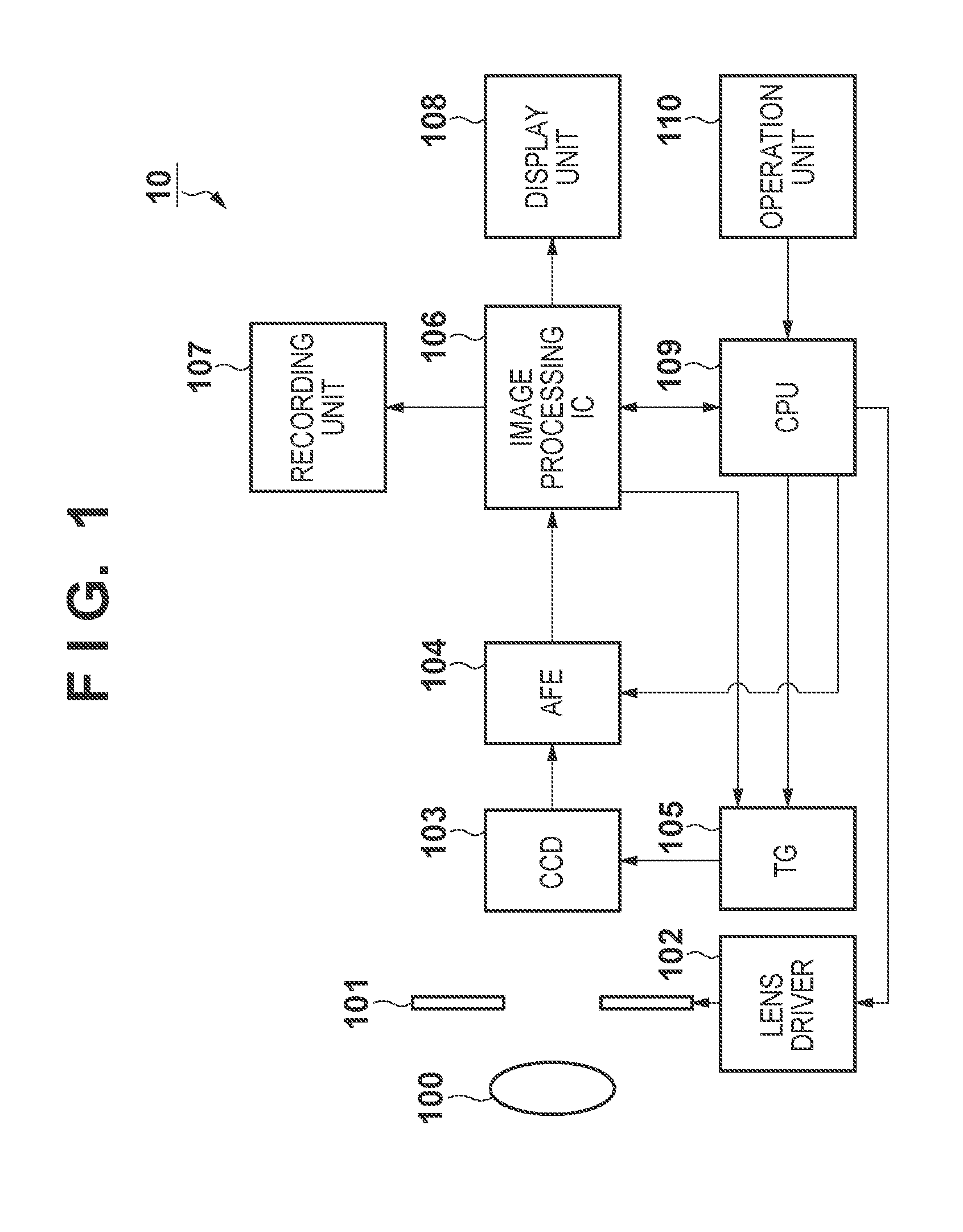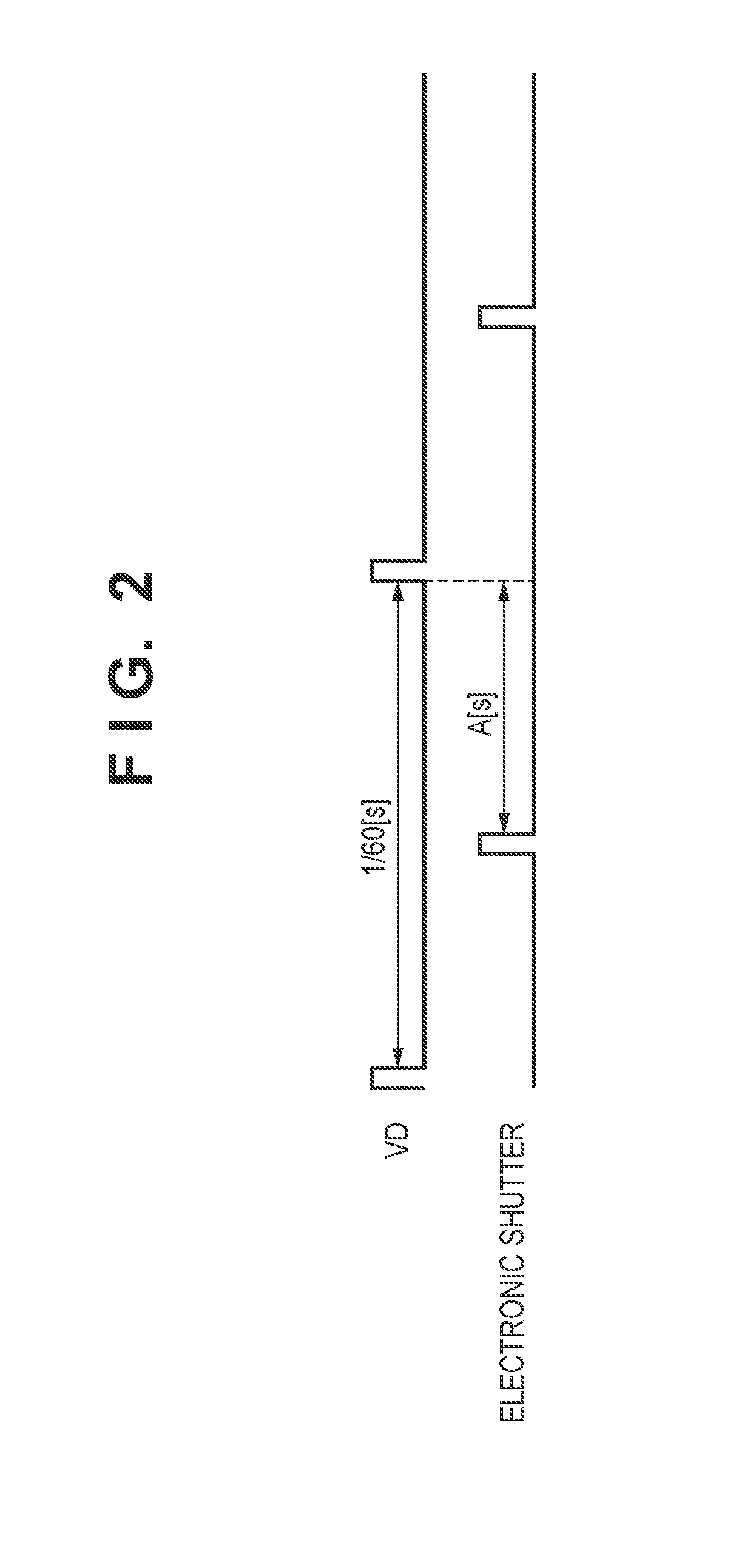Image capturing apparatus and control method therefor
a technology of image capture apparatus and control method, which is applied in the direction of color television details, television system details, television systems, etc., can solve the problems of increasing noise, and reducing the image quality of the image, so as to reduce the degradation of the image quality
- Summary
- Abstract
- Description
- Claims
- Application Information
AI Technical Summary
Benefits of technology
Problems solved by technology
Method used
Image
Examples
first embodiment
[0045]As described previously, when the image-capturing frame rate changes from “Normal” to “High Speed”, video may be darkened as a result of the shortened exposure time. In the case where a drop in luminance is compensated for by opening the aperture 101, a certain amount of time is required to obtain video with appropriate luminance because the aperture 101 requires a certain amount of time to be changed to the target state. In view of this, in a first embodiment, the DVC 10 suppresses degradation in image quality when changing the image-capturing frame rate of video by modifying part of the program diagram as indicated by the dashed dotted line in FIG. 3.
[0046]In the first embodiment, the normal frame rate is assumed to be 60 fps and the high frame rate is assumed to be 240 fps, but the respective frame rates are not limited thereto.
[0047]In FIG. 3, the shutter speed (that is, exposure time) at the border between the range E and the range F is 1 / 240 seconds, which is shorter tha...
second embodiment
[0056]A second embodiment first describes a configuration for suppressing an increase in gain during image capturing performed at the normal frame rate, and then describes a configuration for frame-cyclic noise reduction. In the second embodiment, the basic configuration of the DVC 10 is similar to that of the first embodiment (see FIG. 1), but the program diagram shown in FIG. 3 is modified into the one shown in FIG. 5. In the second embodiment as well, the normal frame rate is assumed to be 60 fps and the high frame rate is assumed to be 240 fps.
[0057]A comparison of FIG. 3 and FIG. 5 shows the difference therebetween in that the range G in FIG. 3 is divided into ranges G1 and G2 in FIG. 5. In the range G1, the shutter speed is reduced from 1 / 240 seconds to 1 / 60 seconds as the subject gets darker. The F number and the gain do not change during this time. If the subject gets even darker, the gain is increased while fixing the shutter speed and the F number as shown in the range G2....
third embodiment
[0068]In the first and second embodiments, the DVC 10 suppresses degradation in image quality when changing the image-capturing frame rate by, in principle, limiting the exposure time since before the image-capturing frame rate changes to “High Speed”. In contrast, in a third embodiment, the DVC 10 suppresses degradation in image quality by taking measures at the time when the image-capturing frame rate changes from “Normal” to “High Speed”. In the third embodiment, the basic configuration of the DVC 10 is similar to that of the first embodiment (see FIG. 1), but the program diagram to be used is the portion indicated by the solid line in FIG. 3, rather than the portion indicated by the dashed dotted line. In the third embodiment as well, the normal frame rate is assumed to be 60 fps and the high frame rate is assumed to be 240 fps.
[0069]As described previously, examples of the time when the image-capturing frame rate changes from “Normal” to “High Speed” include the time when video...
PUM
 Login to View More
Login to View More Abstract
Description
Claims
Application Information
 Login to View More
Login to View More - R&D
- Intellectual Property
- Life Sciences
- Materials
- Tech Scout
- Unparalleled Data Quality
- Higher Quality Content
- 60% Fewer Hallucinations
Browse by: Latest US Patents, China's latest patents, Technical Efficacy Thesaurus, Application Domain, Technology Topic, Popular Technical Reports.
© 2025 PatSnap. All rights reserved.Legal|Privacy policy|Modern Slavery Act Transparency Statement|Sitemap|About US| Contact US: help@patsnap.com



